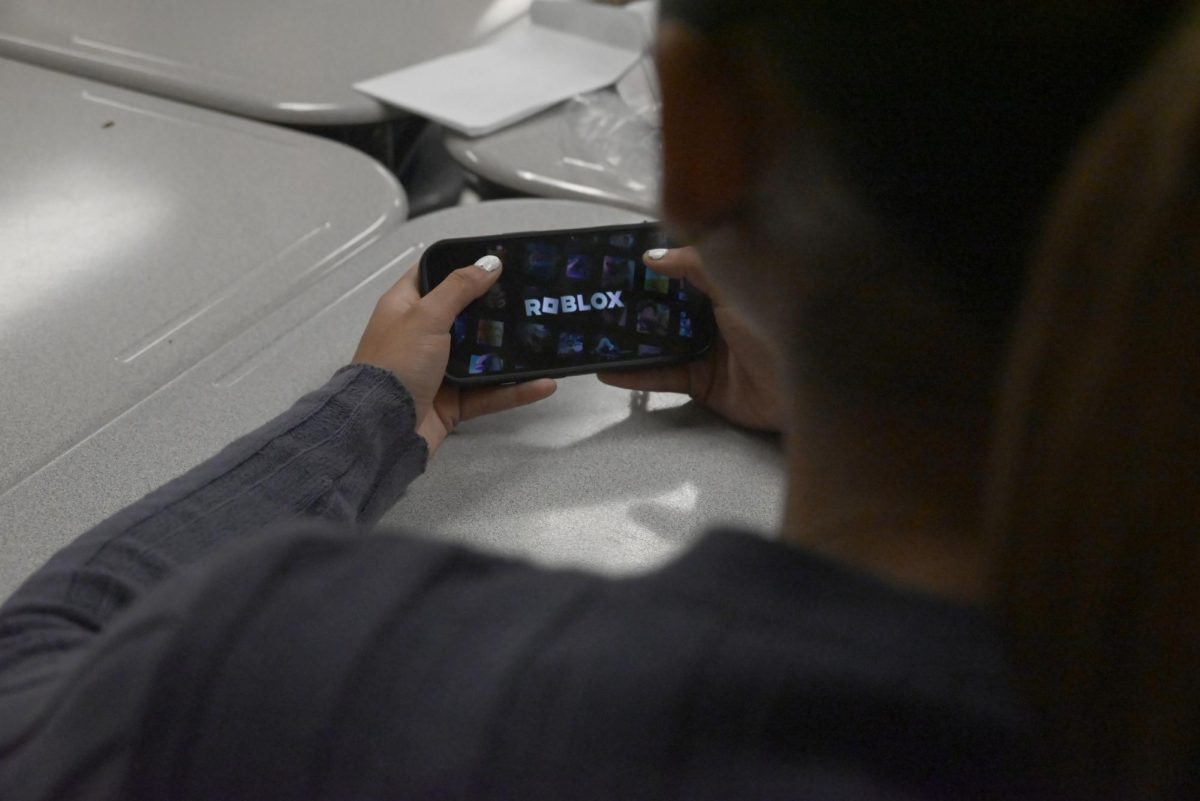
Aidyn Kinchen
From Bloxburg to Grow-a-garden Pandemic growth cemented Roblox’s lasting teen appeal
Roblox has teenagers in chokeholds. Ask parents, teachers or friends and they’ll all testify that at least one teenager they know is Roblox-afflicted.
No one is unacquainted with Roblox.
Roblox offers as many as 40 million games to play from, spanning genres such as horror, education, roleplay, obstacles or “obbys,” simulators, tycoons and fighting games with its most popular games being “Steal a Brainrot,” “Grow a Garden” and “99 Nights in the Forest.”
These games garner thousands of likes and visits a day that have essentially fostered an online community. Roblox’s expansive game list has been a part of its appeal for almost a decade.
That goodwill exploded in the midst of the Covid-19 pandemic when pre-teens were stuck inside their homes with nothing but a screen.
Those pre-teens have now become the current set of high schoolers where Roblox has remained a staple.
While seemingly ordinary, it raises questions about why Roblox has survived longer than its contemporaries with games such as “Among Us” and “Fall Guys” having a steep decline in player base post-pandemic isolation.
Its prevalence signals a possible shift in the ways young Gen Z prioritizes social connection and online entertainment.
Roblox’s expansive nature isn’t just a tagline – it’s become more than a game.
Teenagers utilize Roblox as a social space in and of itself, blending reality with online extensions.
While this is not necessarily a negative development, it cements the belief that Gen Z is the first to co-exist with technology and the effects of that maturing before our very eyes.
Roblox’s cultural relevancy also provides a framework for not just how Gen Z teenagers communicate with the world around them but also for how Gen Alpha might be on a similar path – only accelerated.
Gen Alpha isn’t just co-existing with technology – they’re entrenched by it.
In the new generation’s case, it’s not just Roblox. It’s a plethora of other games and technology-derived entertainment, such as AI ‘brainrot.’
Today’s teenagers have undoubtedly brought Roblox from their isolated childhoods into their adolescence in a profound technological-cultural crossroad, but as the first of Gen Alpha pushes into pre-teenhood, the precedent set by Gen Z does not bode well.
Instead of bringing just Roblox with them into high school, Gen Alpha might just bring their entire iPad with them. Without further reinforcement that prioritizes real connection instead of online chatboxes, Generation Alpha will be far beyond ‘bacon’ avatars in their formative years.
Roblox is a mark of the 2020s decade. It’s become a facet of American high school culture. But its bloom might signify that its status as a rare commodity that survived pre-pandemic to post-pandemic culture won’t be unchallenged in the coming years of Gen Alpha dominance.
